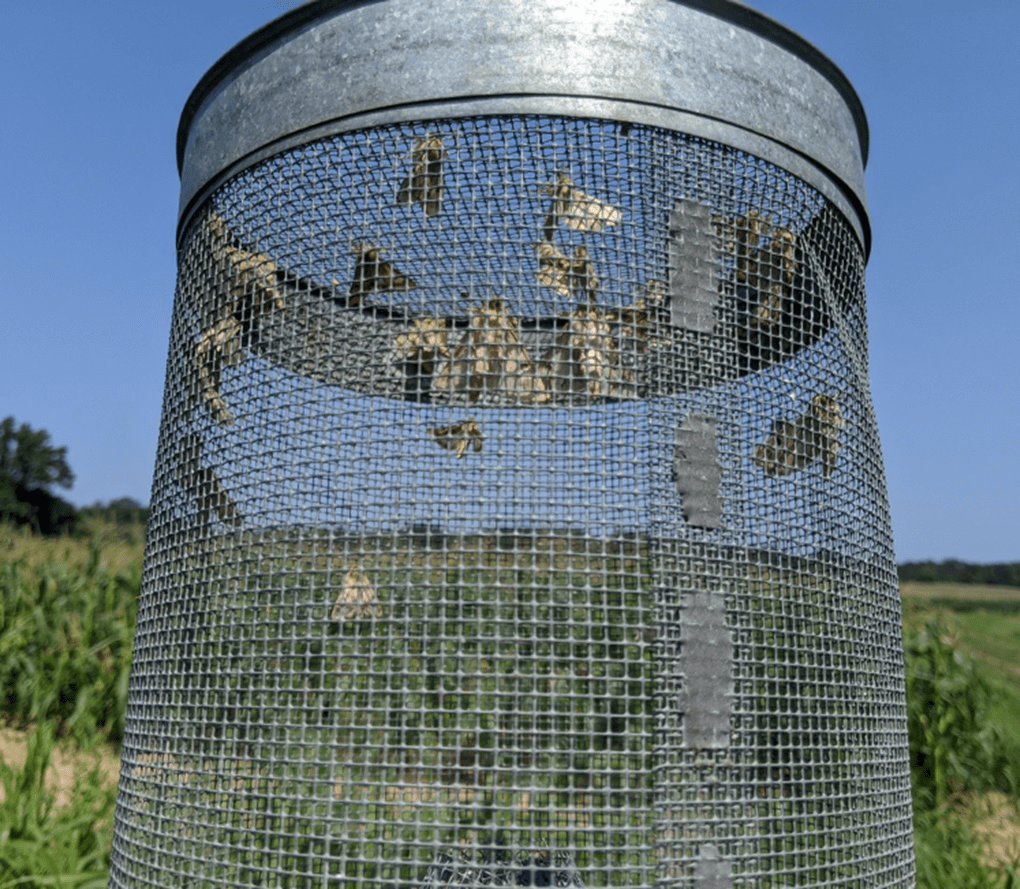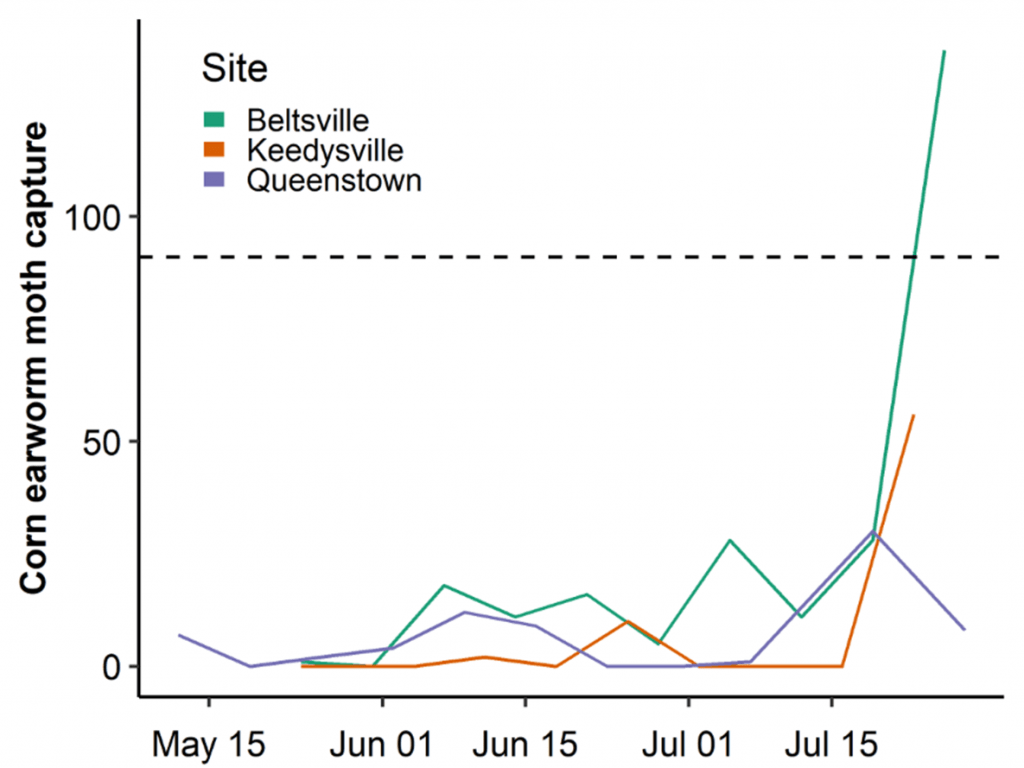Alan Leslie, Agriculture Agent | aleslie@umd.edu
University of Maryland Extension, Charles County

A few hot spots where corn earworm (also known as tomato fruitworm, soybean podworm, and sorghum headworm) activity is starting to rise have been identified in central Maryland. The relatively mild 2020-2021 winter allowed adult moths to overwinter in Maryland, and some parts of the state experienced a higher than normal first flight in early June. Now that we are heading towards the end of summer, the next generation of moths are emerging as adults and have begun flight. Some areas continue to capture few moths and are experiencing low pressure, while others have been experiencing moderate pressure that has increased to heavy pressure (Fig. 1). See Figure 2 for pressure at select sites in Maryland. Monitoring pressure using on-farm traps provides the most accurate information for making management decisions. We recommend using two pheromone traps and replacing the lures frequently, especially during periods of hot weather. For weekly updates on pheromone trap captures across the state and information on how to scout for and manage corn earworm in vegetable and grain crops, visit the new webpage: https://extension.umd.edu/resource/corn-earworm-pheromone-trapping.

